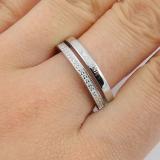We can all agree that shopping online makes a life much easier , and saves time and money. Especially for those short on time. Firing up your computer and have the possibility of finding what you are after from the convenience of your home is really quite priceless. But , how does one protect itself from all the shady sellers out there claiming to sell authentic Emporio Armani watches, when they are really just pushing some fake Chinese replica ?
Well, not all hope is lost, there 7 simple ways to weed out the cheaters and also spot the genuine websites offering the real thing and saving you money on your purchase.

1- If your seller is from Chinese city offering deep discounts on that coveted Armani ceramic watch, run for the hills. It is a fake. Contrary to the popular belief , Asians don't have access to the brands at discounted prices as the Americans do. As a matter of fact, the most money is made in Asia by the luxury brands because the market is not as competitive as in the USA.
2- If you are offered a price less than 60% of the original price and no warranty is offered, then just look for another place. Chances are these are fakes.
3- Does the watch come with certificate of authenticity or certificado di autenticidad, if it does not , then it might be a fake. Because all Armani original watches come with it.
4-The seller insists on Western union or bank transfer, you are in front of scammer heed for the door quick!!
5- The site has the same prices for all its watches , sometimes when browsing , you will see that all of them asking $80.00 for every style. well hello!! Armani has different price points ,ranging from $125 up over $750.00.
6- A genuine seller will offer the watch with the original box, warranty and certificate of authenticity , and will accept credit cards or paypal payments. Also i will see if the site takes it own pictures or just copy them the internet. Always a good sign when the photos are taken inhouse; it shows that 1st of all they have in stock and secondly , they are in this business for the long haul .
7- The site needs to be registered in USA or Europe and you have to be able to check the registration and i will call the phone listed on site. You will be amazed how a simple call can spot a real seller from a fly by operation.